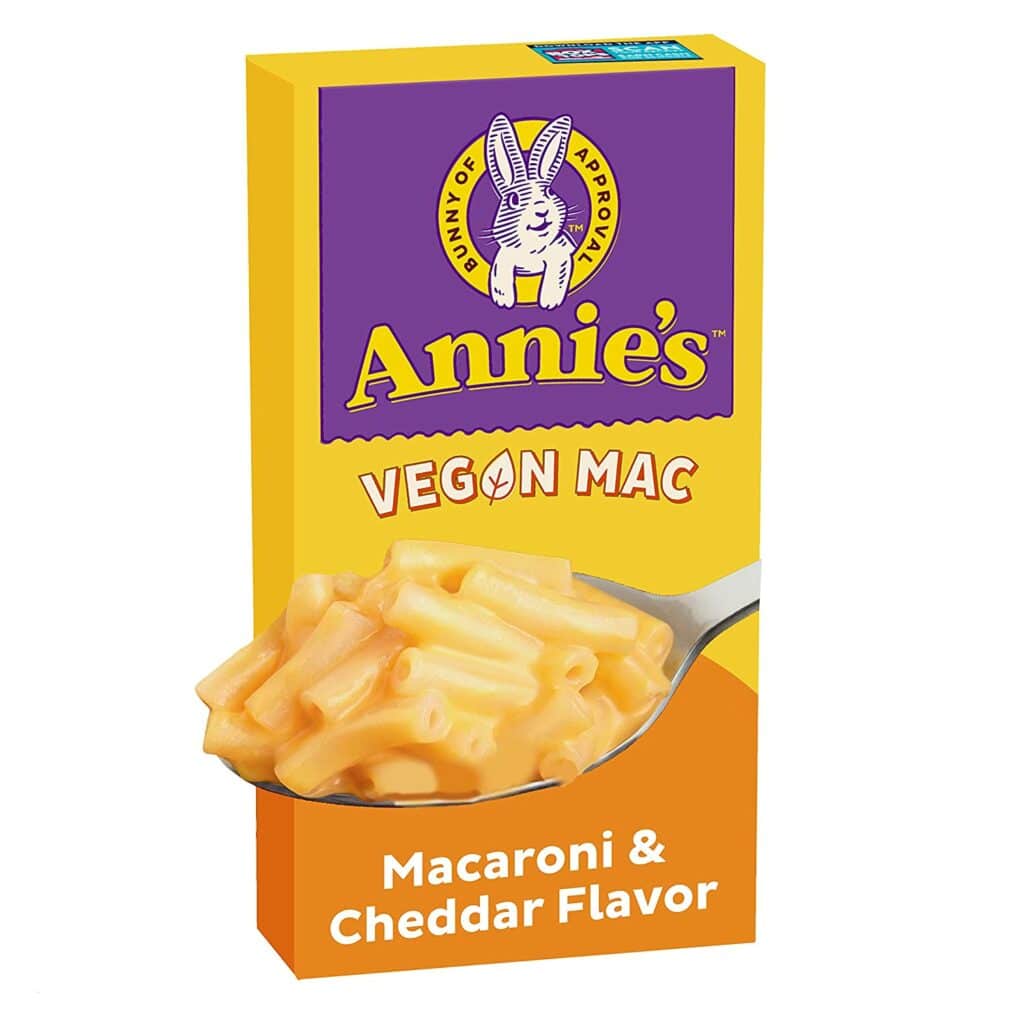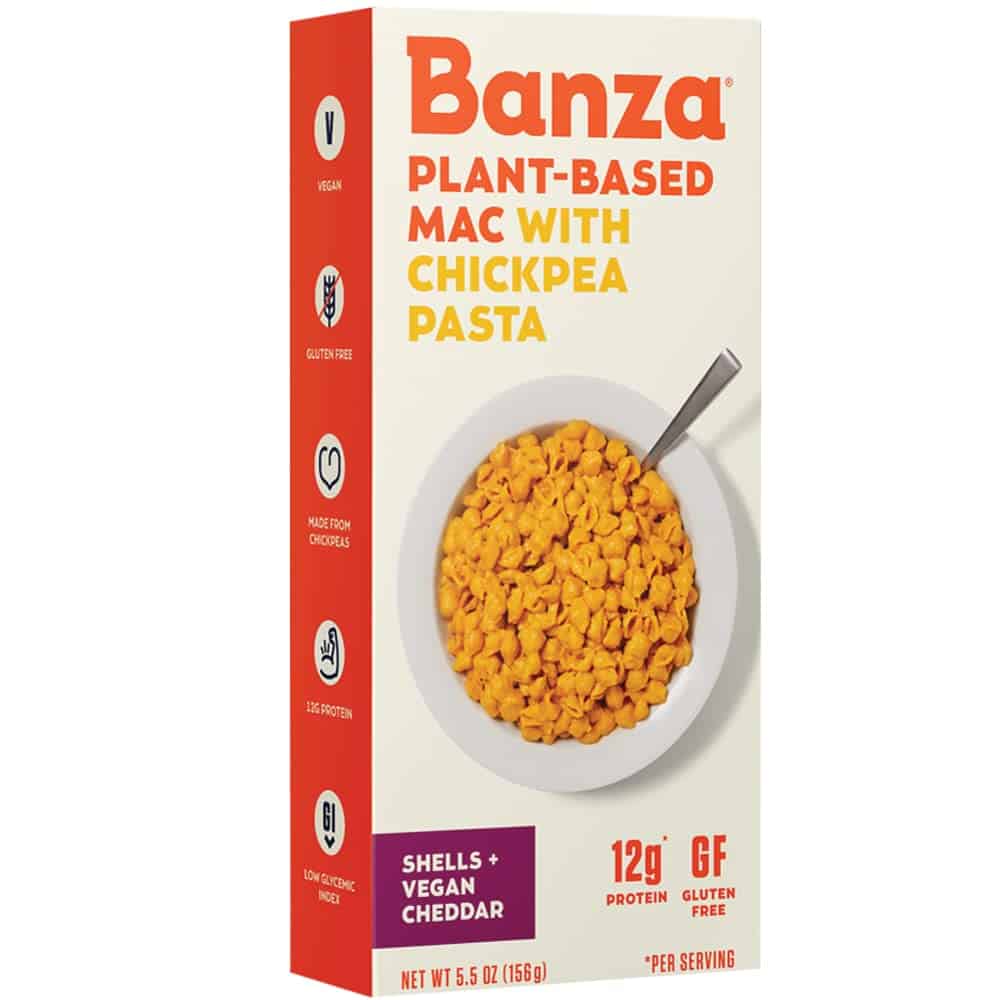This post may contain affiliate links.
I don’t know about you, but my kids love mac and cheese and I don’t blame them. I do too! Personally, I prefer the shapes or spiral mac and cheese – it just tastes better!
It’s safe to say that mac and cheese is a kid favorite. So much so that it’s a staple right next to chicken tenders on most kids’ menus.
But maybe you’re kids like it so much that it’s the only thing they’ll eat, or request on a nightly basis – been there! Is it even possible to make healthy mac and cheese for kids?
And maybe you’re wondering “This can’t be good for them. Mac and cheese isn’t a healthy option. I’m failing them!”
First things first, you are NOT failing them. Stop that negative talk right now.
If this is you, you’re in the right place. I’m not here to tell you to stop serving mac and cheese. In fact, quite the opposite. I’m going to fill you in on the nutritional benefits of mac and cheese, 10 ways to offer mac and cheese, plus a super simple homemade butternut squash mac and cheese recipe your kids will love!
Table of Contents
Benefits of Mac and Cheese
It’s easy to point out all the nutritional negatives of mac and cheese, but what’s life without the ooey gooey cheesy goodness of mac and cheese? Food should be delicious and yes, mac and cheese is too nutritious!
So what does mac and cheese really have to offer? Let’s take a look.
Carbohydrates
Carbohydrates always get a bad reputation, but I’d like to contest that claim. Carbs are our body’s main source of energy, so we need them, and your kids need them more than anything for their rapidly growing bodies.
Fat
Fat is another macronutrient (one of the three main nutrients our body uses for energy), that often gets frowned upon. Mac and cheese does contain saturated fat, something we do want to minimize but do not have to avoid completely.
Fat can actually be a great macronutrient for your child, especially for picky eaters. It provides more calories per gram, aka more bang for your bite. Fat also helps keep them fuller longer so they’re not coming to you five minutes after dinner requesting a snack.
Protein
Protein typically isn’t a nutrient in short supply for most children and adults. In fact, we usually get more than enough, even if it doesn’t seem like it.
One ½ cup serving of boxed mac and cheese contains 5 grams of protein, which is half of a 20 lb toddler’s protein needs for the day. That doesn’t even include the milk they will drink at dinner either!
Protein is essential for your body to build and repair muscles and tissues within the body so I’d say it’s pretty valuable and the protein found in your mac and cheese is a great option! Research has also shown that eating protein with meals and snacks helps keep you fuller longer.
You can read more about how much protein your child needs here.
Calcium
You may recall being told that calcium is good for growing strong teeth and bones, but did you know that 99% of our calcium is stored in our bones? If we don’t get enough calcium from our diet, our body starts to take it from our bones, weakening them over time.
It’s essential to make sure you’re child is getting enough calcium from their diet, especially between the ages of 9 and 18 to set them up for healthy bones and teeth for life. Our bodies are not as great at storing calcium once we are adults.
Daily Calcium Recommendations
| Age (years) | Calcium Need (mg per day) | Servings of Low-Fat Dairy Products to Meet Need |
| 4-8 | 800 mg | 3 |
| 9-18 | 1300 mg | 4 |
| 19+ | 1000 mg | 3-4 |
One ½ cup serving of boxed mac and cheese will contain roughly 65 mg of calcium, which is a start. Then you throw in a cup of milk and you have nearly half your child’s (ages 4 – 8) calcium needs for the day.
Keep in mind that too much calcium can minimize the absorption of iron so don’t go overboard on dairy products and try to limit milk to no more than 20-24 oz or 4-5 servings of dairy per day.
The Downside of Mac and Cheese
The downside to mac and cheese is that it does usually contain quite a bit of sodium, something we should keep an eye on. With that said, I’d never recommend mac and cheese every day, even if you have the pickiest of eaters.
If you find that it’s one of the only foods your child will eat that gives them at least some nutritional value discussed above, try serving it no more than every other day to minimize the burn out which can lead to your child eventually disliking it.
To help balance out the sodium in mac and cheese, you can try making it yourself to better control what goes in it. Another option is to try and pair it with something fresh like roasted broccoli or steamed peas. It’s all about balance!
Is Boxed Mac and Cheese Healthy?
I’m not too fond of the word healthy because it’s thrown around so differently depending on who’s using it. The definition of healthy is very much relative to the person using the word.
According to Merriam-Webster, healthy is “beneficial to one’s physical, mental, or emotional state: conducive to or associated with good health or reduced risk of disease.”
One could argue that making a box of mac and cheese for your family helps your mental and emotional health because you don’t have to spend the time finding a recipe or buying each ingredient to make it homemade.
If you ask the Food and Drug Administration (FDA) which regulates the claims you see on all your food packaging, they have a pretty complex system for determining if a food is “healthy.”
If we look at the grain category, since mac and cheese is predominantly pasta, with its first ingredient being enriched macaroni, boxed mac and cheese, let alone probably homemade mac and cheese, wouldn’t be considered “healthy.”
| Food group equivalent minimum | Added sugar limit | Sodium limit | Saturated fat limit | |
| Grain product | ¾ ounce-equivalent wholegrain | 5% DV | 10% DV | 5% DV |
| Kraft Boxed Mac N Cheese | Not whole grain | 0% DV | 31% DV | 22% DV |
| Annies | Whole grain | 0% DV | 24% DV | 41 % DV |
From this table, you can clearly see that both Kraft and Annies exceed sodium and saturated fat limits to be considered “healthy.”
Let’s be clear. This does not mean that mac and cheese can’t be included in a healthy diet! Of course, all foods can fit. Variety is more important than any concern with one particular food or ingredient alone.
So go ahead and enjoy mac and cheese with or without your kids, just remember to include a wide variety of foods throughout the day and week.
How to Make Mac and Cheese Without Milk
I don’t know how many times I’ve gone to make mac and cheese, boiled the noodles and everything, only to find I’m out of milk!
What do you do? Can you just use water instead, or are you left with buttered noodles for dinner?
There are actually quite a few substitutes you can use in mac and cheese without milk if you’re fresh out.
Instead of milk, you can try adding pasta water, broth, shredded cheese, cream cheese, cream, evaporated milk, olive oil, milk substitutes, mayo, and yogurt to name a few.
Lactose-Free Mac and Cheese
Does your child have lactose intolerance? Don’t worry, there are still plenty of ways for your child to enjoy lactose-free mac and cheese.
You can certainly just substitute the milk with your milk substitute and dairy-free cheese of your choice. Or you can even buy lactose-free and dairy-free boxed mac and cheese. That’s the beauty of technology and food science; it allows people to enjoy more foods safely and have more options!



Healthy Mac and Cheese for Kids
You’re always welcome to make mac and cheese the way you enjoy it most and maybe that’s plain jane. Here are 10 different ways to enjoy healthy mac and cheese for kids!
Cook in Bone Broth

Try cooking your pasta in either chicken bone broth or a combination of bone broth and water. This will help the pasta absorb some of the beneficial nutrients bone broth has to offer, including more protein.
Thank you to Kettle and Fire for providing me with bone broth to test out and try for myself. More on the benefits of bone broth plus a hot cocoa bone broth recipe here.
Cottage Cheese

Cottage cheese contains roughly 10-15 grams of protein per ½ cup serving. This is a great way to add more protein to your picky eater’s meals! However, keep in mind that cottage cheese is typically high in sodium, so use it sparingly.
Picky eater tip: purchase the small curd variety to minimize lumps. Sometimes that weirds kids out.
Greek Yogurt

Aim for a plain, full-fat (whole milk) greek yogurt. No one wants vanilla mac and cheese! This will add more protein and fat into each bite your picky eater may or may not reluctantly take. We love Stonyfield Organic in our house.
Picky eater tip: try letting them mix the yogurt into their mac and cheese to help cool it down. Sometimes if you try to ‘hide’ things in their food, it can backfire if they ever figure out you’ve been “tricking” them.
Shredded Cheese

Well, that was easy. Who doesn’t like more cheese?
Picky eater tip: provide your child with a small bowl of cheese and let them add it themselves. They may just eat the shredded cheese plain and that’s okay too!
Butternut squash

Butternut squash is perfect for adding to mac and cheese due to its similar color! Check out my super simple hidden veggie mac and cheese with butternut squash recipe. There’s a must-do step for the best texture.
I recommend just using a frozen steamer bag of butternut squash to make it super simple.
Picky eater tip: get a fresh butternut squash and have your child help you prepare it by washing it, scraping out the seeds, and pureeing it. Getting your kids in the kitchen is vital for developing a healthy relationship with food.
Check out the three most important strategies to help your picky eater try new foods here.
Hemp hearts

Hemp hearts are packed with protein, iron, zinc, magnesium, and omega 3’s and a little goes a long way. These are easy to sprinkle into mac and cheese to boost its nutritional value.
My favorite brand is Tiny Sprouts Super Seed Boosters because they also have added Vitamin D and probiotics. Use code ALEX10 for 10% off your first order.
Picky eater tip: kids love to be involved, so let them sprinkle on their own hemp hearts so they’re more likely to enjoy it too.
Cauliflower

Rice cauliflower is an easy addition to mac and cheese because you can’t quite tell it’s there due to its white color. This would go great in a white mac and cheese!
I recommend getting frozen steamer riced cauliflower to make the process simple. You can sprinkle in the cooked riced cauliflower or puree it into the milk to make it disappear even more.
Picky eater tip: Remember, hiding ingredients in foods can backfire. Instead, have your child get in the kitchen and help you!
Vegetables

Personally, I love bulking up my mac and cheese with vegetables. It makes me feel like I’m getting more, but in reality, I’m just getting more veggies which everyone needs a little help with, including myself.
Try their favorite vegetable at first so you don’t freak them out with one they don’t like quite yet. Vegetables that work well with mac and cheese are peas, carrots, corn, and my favorite – broccoli!
Picky eater tip: Many kids don’t enjoy mixed foods, and that’s okay. You can help them slowly learn to enjoy veggies mixed together by adding one tiny piece into their mac and cheese at a time.
You can also even try giving them a side of veggies and asking them to bury a pea in their mac and cheese. Sometimes, you have to make it fun!
Broccoli sprinkles

Broccoli is my favorite vegetable, especially roasted. Sometimes we have to think outside of the box when it comes to feeding kids. Instead of putting broccoli florets into your child’s mac and cheese, try just sprinkling on the tiny sprouted tops. This can help them learn to like broccoli!
Picky eater tip: if they won’t sprinkle it into theirs, let them sprinkle it onto yours.
Chickpea pasta

I love recommending chickpea pasta as one of many pasta options to have in your pantry. Especially for introducing solids, it contains more fiber, protein, and iron than enriched pasta.
Just watch out, chickpea pasta tends to boil over very easily.
Picky eater tip: if your child enjoys pasta, simply switching the variety or shape can help them slowly adjust to trying new foods.
Lentil Pasta

Another great option similar to chickpea pasta is lentil-based pasta. Lentils are considered a pulse and contain fiber, protein, and iron.
Picky eater tip: Lentil pasta is typically red in color so have fun discussing how lentil pasta looks different than other pasta your family enjoys. You can also learn about lentils so your child better understands what their food is made from.
Conclusion
At the end of the day, especially a busy one, it’s absolutely okay to rip open a box of mac and cheese and call it good. Just make sure to add plenty of variety throughout the week.
Mac and cheese does have nutritional value to offer you and your family, such as carbohydrates, protein, and fat, plus calcium and other vitamins and minerals.
If you ever run out of milk or are lactose intolerant/dairy-free, you can substitute it with your favorite milk alternative, pasta water, yogurt, and many more options here.
If you want to step it up a notch, try cooking in bone broth, adding cottage cheese, Greek yogurt, shredded cheese, hemp hearts, riced cauliflower, butternut squash, broccoli sprinkles, and other veggies, or switch up the type of pasta with chickpea or lentil pasta.





